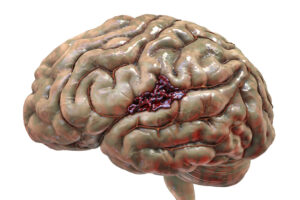Cerebral amyloid angiopathy (CAA) has multiple etiologies but is characterized by deposits of misfolded amyloid β peptides and is the second leading cause of intracerebral hemorrhages (ICH). Both animal and human studies suggest that prion-like transmission of misfolded amyloid β can lead to CAA. To explore the possibility of transfusion transmission of CAA, a retrospective cohort study was conducted to analyze intracerebral hemorrhages (ICH, a proxy for CAA) among blood donors and their transfusion recipients using national heath registry data in Sweden and Denmark. In total, 759 858 patients from Sweden and 329 512 patients from Denmark who received blood transfusions from 1980 to 2017 were followed starting 180 days after their first transfusion, until death, first and/or second spontaneous ICH event, or until the end of study follow-up. Swedish and Danish transfusion recipients were followed a median of 5.8 years and 6.1 years, respectively. Patients that received RBC transfusions from donors who later developed two or more spontaneous ICH had an increased risk of spontaneous ICH in both the Swedish and Danish cohorts (adjusted Hazard Ratio (aHR), 2.73, 95% CI, 1.72 to 4.35; aHR, 2.32, 95% CI, 1.04 to 5.19; respectively) compared to those who had received blood from donors who did not have ICH. These data suggest that a transfusion-transmissible agent may be associated with ICH, though many questions remain. Further research is needed to confirm the diagnosis of CAA and misfolded amyloid β deposits, explain the short interval between exposure and CAA outcome in the study, and explain how misfolded amyloid β could travel from the blood to the brain.
References:

